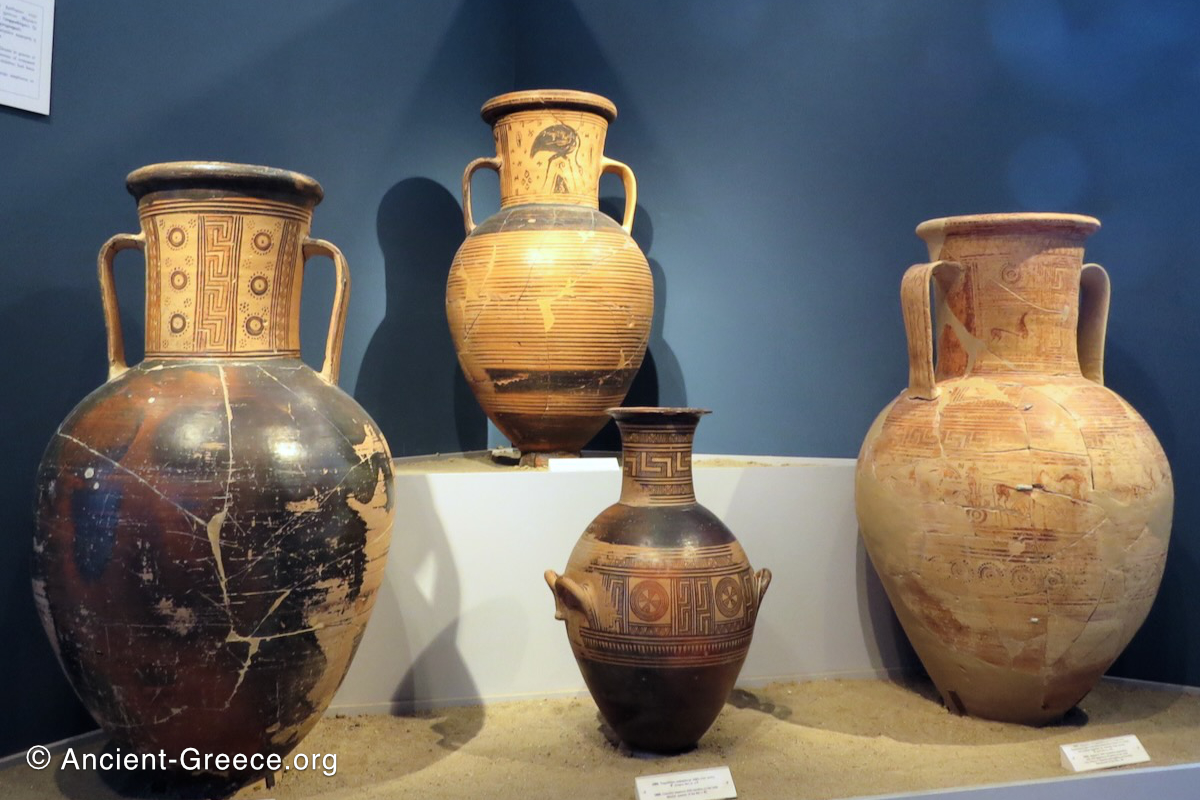
On this page:
Το Αρχαιολογικό Μουσείο Ελευσίνας. The Archaeological Museum of Eleusis (or Elefsis) is a small museum, located on the low hill above the Telesterion. It shelters artifacts unearthed in the excavations of the surrounding site, ranging in age from Neolithic to Byzantine times.
Pre-Classical Artifacts
Top row, left to right:
- Fleeing maiden. Female statue from the pediment of the Sacred House which depicted the abduction of Kore. 490-480 BCE.
- Proto-Attic amphora detail with depiction from the Odyssey: Odysseus and his men driving a stake into the Cyclops’ eye.
- Proto-Attic amphora. On the neck, a scene from the Odyssey depicting Odysseus and his men driving a stake into the Cyclops’ eye. On the body it has a scene of Perseus beheading the Medusa.
From the West Cemetery. Mid-7th c BCE. - Group of large Geometric Amphorae.
Second row:
- Stone statuettes: A marble figurine of Cycladic type from the Early Helladic period (left), and a female figurine from the Neolithic period (right).
- Marble head of a horse. Late 6th c. BC.
- 3,4: Archaic Kouros. 6th c. BCE
Classical and Hellenistic Artifacts
Top row, left to right:
- Statue of Demeter, attributed to the sculptor Agorakritos’ workshop. Circa 420 BCE.
- Statue of Asklepios dedicated by Epicrates son of Pamphilos. Original 320 BCE.
- Persephone Kore (Roman copy).
- Archaistic statue of Dionysos. 3rd c. BCE.
- Nude male statue.
Second row:
- Votive relief depicting Demeter seated on a throne with a Kore holding torches. First quarter of the 5th c. BC.
- Kore wearing an obliquely draped Ionian himation and a chiton. 4th-3rd c. BCE.
- Statue of Antinoos in the type of Asklepios or Dionysos. Roman, 2nd c. CE.
- Bust of Athena emerging from lotus.
- Caryatid from the Lesser Propylaia. Late 1st c. BCE.
More from the Collection
- Bronze cinerary urn set in a poros block. It contained the cremated remains of a woman. From the west cemetery of Eleusis. 480 c. BCE.
- Roman era votive slab with a depiction of the processing of oil (olive-press, cistern, and a vase with a bust of Athena as a lid.
- Two views of a partial entablature reconstruction of the Telesterion of Peisistratos. Decorative ram’s head from the sima. 6th c. BC.


























